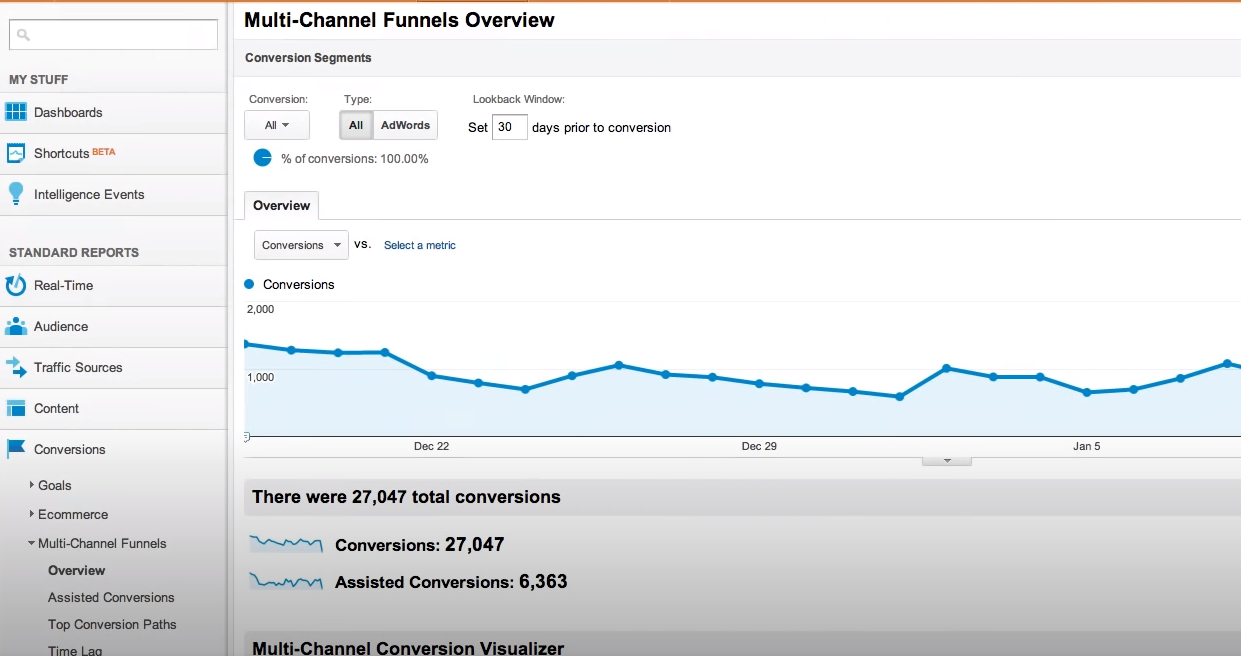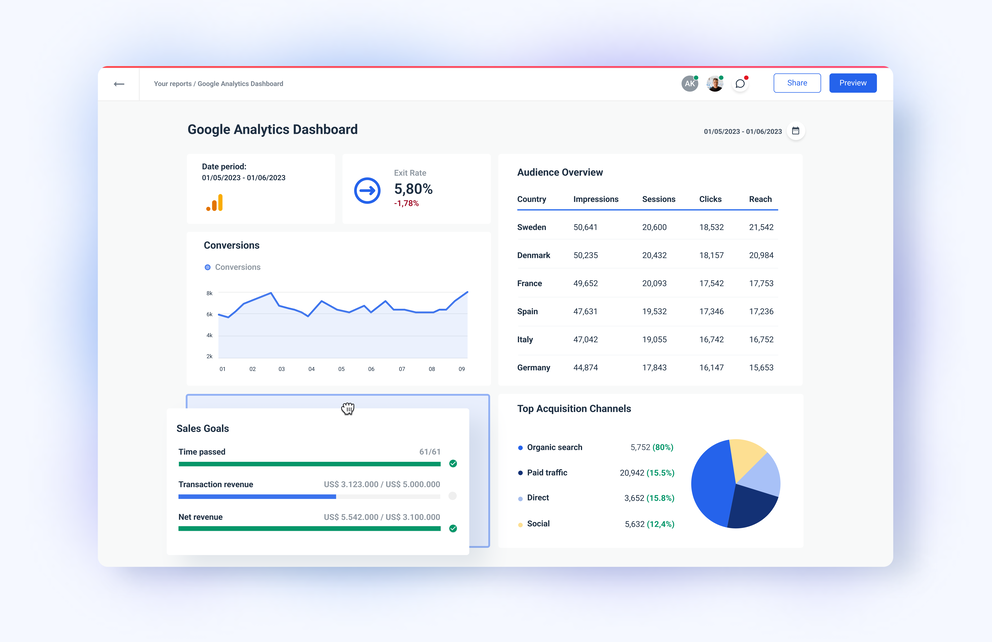Learn About the Types of Data Google Analytics Does Not Allow You to Collect
Learn About the Types of Data Google Analytics Does Not Allow You to Collect
Blog Article
Leveraging Google Analytics for In-Depth Insights Into User Habits and Engagement
In the electronic landscape where user actions and involvement hold the key to on the internet success, leveraging devices like Google Analytics has actually come to be extremely important for businesses seeking to understand their target market's communications with their systems. This innovative analytics system provides a riches of data that can reveal elaborate information concerning exactly how individuals navigate sites, engage with content, and ultimately transform - what data does google analytics prohibit collecting. By taking advantage of Google Analytics, companies can discover important understandings that surpass surface-level metrics, offering a detailed understanding of individual habits and preferences
Comprehending User Actions Through Google Analytics
Utilizing Google Analytics offers a comprehensive understanding of user actions on electronic platforms. By evaluating data such as the variety of site visitors, their geographic areas, the pages they check out, and the actions they take, businesses can gain beneficial understandings into exactly how users connect with their applications or web sites. This details permits informed decision-making, enabling companies to enhance their on the internet presence for enhanced user experience and involvement.
One trick element that Google Analytics aids to uncover is customer web traffic patterns. By tracking metrics like the resource of web traffic, referral web links, and prominent key words, businesses can determine what drives users to their platform. what data does google analytics prohibit collecting. This understanding help in tailoring advertising and marketing methods to target specific demographics or rate of interests properly
Additionally, Google Analytics supplies comprehensive records on user interaction, showcasing metrics like bounce prices, session durations, and conversion rates. Recognizing these metrics provides beneficial feedback on the efficiency of content, style, and overall individual experience, empowering services to make data-driven enhancements and drive much better results. Fundamentally, Google Analytics serves as a powerful tool for figuring out user behavior and enhancing electronic systems for success.
Analyzing Site Traffic Patterns
Recognizing the flow of website traffic on a website is vital for enhancing its efficiency and boosting customer involvement. Analyzing site traffic patterns offers important understandings right into just how users communicate with the site, what content they discover most appealing, and where they might be encountering barriers. By leveraging tools like Google Analytics, web site owners can track metrics such as web page sights, distinct visitors, bounce rates, and typical session period to acquire a detailed understanding of user actions.
Studying web traffic sources is crucial in figuring out where site visitors are originating from, whether through natural search, social media, recommendations, or direct website traffic. This details aids in customizing advertising techniques to target particular audiences properly. In addition, examining the habits flow within the internet site can highlight preferred landing pages, departure pages, and the most usual courses users take via the website. Determining these patterns enables site proprietors to make informed choices regarding material placement, navigation improvements, and total site layout to improve user experience and drive conversions.
Monitoring User Interaction Metrics
To grow the understandings gained from examining internet site traffic patterns, it is essential to concentrate on monitoring user engagement metrics. User involvement metrics provide important info regarding just how site visitors communicate with a web site, showing the degree of rate of interest and contentment with the content. By tracking metrics such as bounce price, average session duration, pages per session, and conversion prices, web site proprietors can recognize the efficiency of their material and individual experience.
Bounce price measures the percent of site visitors that browse far from the website after checking out only one page, suggesting whether the material is relevant and engaging. Typical session duration discloses just how much time site visitors invest in the site, reflecting their degree of rate of interest. Pages per session metric shows the average number of web pages site visitors check out throughout a session, suggesting the depth of expedition. Conversion prices track the percent of site visitors who finish a wanted activity, such as filling or making an acquisition out a type, showing the performance of the website in driving customer activities. By examining these individual engagement metrics, internet site proprietors can make informed choices to maximize their material and customer experience to enhance interaction and achieve their objectives.
Identifying Conversion Opportunities
Identifying prospective conversion opportunities is an essential facet of optimizing web site efficiency and achieving wanted user actions. Via Google Analytics, companies can discover beneficial understandings that can help in determining locations where customers are leaving or not proceeding to the preferred conversion activities. By analyzing metrics such as conversion rates, touchdown web page performance, and individual circulation, businesses can pinpoint prospective bottlenecks in the conversion process.

In addition, utilizing Google Analytics' habits circulation feature can provide a graph of exactly how customers navigate via the site. This can aid in identifying preferred paths along with any kind of obstructions that might be hindering conversions. By leveraging these understandings, businesses can enhance their website for enhanced customer experience and enhanced conversion prices.
Enhancing Customer Experience With Data-Driven Insights
By leveraging data-driven understandings from Google Analytics, organizations can tactically maximize their site to boost individual experience and drive greater conversion prices. Comprehending customer behavior through data evaluation permits companies to tailor their internet sites to meet the particular needs and choices of their target audience. By determining crucial metrics such as bounce rates, session duration, and popular web pages, services can get beneficial insights into how customers communicate with their site.
Google Analytics supplies in-depth details on customer demographics, tools made use of, and even the particular actions handled the site. This data makes it possible for businesses to make informed decisions on website design, content positioning, and total individual flow. By leveraging these insights, companies can create a more engaging and personalized user experience, leading to increased complete satisfaction and loyalty.
Furthermore, data-driven understandings can aid services determine pain points in the customer trip and carry out targeted enhancements to improve the conversion process. By continuously checking and assessing individual habits, businesses can adjust and enhance their web site to guarantee a smooth and delightful experience for additional reading site visitors, eventually driving higher conversion prices and making the most of business success.

Final Thought
Finally, Google Analytics supplies valuable insights right into customer behavior and engagement on sites. By examining web traffic patterns, tracking interaction metrics, and determining conversion chances, services can make data-driven choices to improve the individual experience. Leveraging these insights can lead to improved site performance and increased conversions.
By tracking metrics such as bounce price, ordinary session period, pages per session, and conversion rates, website proprietors can recognize the efficiency of their material and user experience.
Conversion prices track the percent of site visitors that complete a desired activity, such as filling or making a purchase out a kind, mirroring the efficiency of the site in driving user activities. By examining these individual engagement metrics, internet site proprietors can make educated decisions to maximize their material and user experience to enhance involvement and accomplish their goals.
By leveraging these understandings, organizations can enhance their site for boosted individual experience and increased conversion prices.
By leveraging data-driven insights from Google Analytics, organizations can tactically maximize their website to official site boost user experience and drive greater conversion rates.
Report this page